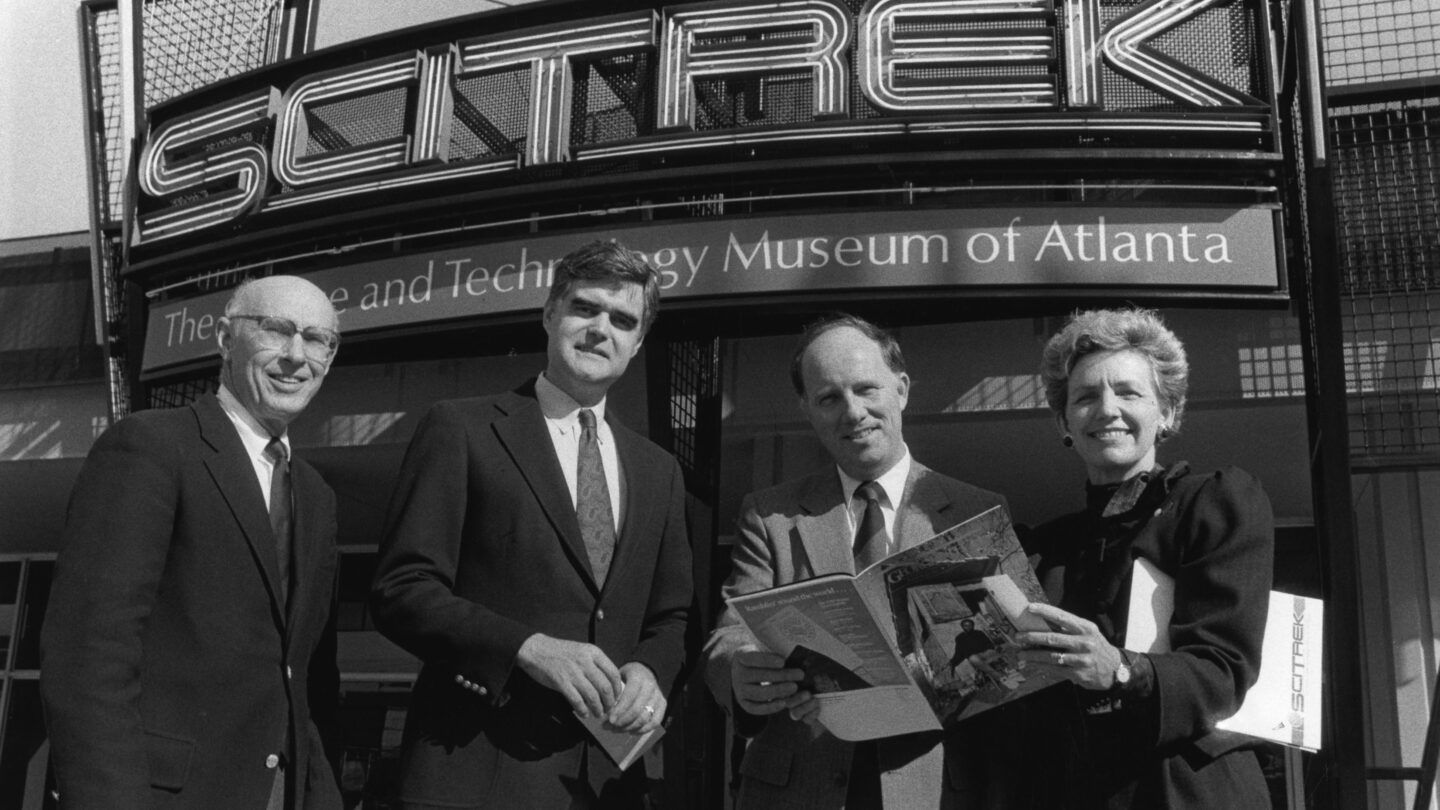
SciTrek directors with donors from Ford outside the museum, circa 1980s. AJCP299-029b, Atlanta Journal-Constitution Photographic Archives. Special Collections and Archives, Georgia State University Library.
Mention SciTrek to an Atlantan of a certain age, and their inner child is sure to activate. Their faces will light up as they reminisce about school field trips to Atlanta’s now-closed science and technology museum, designed specifically for kids. Officially named the Science & Technology Museum of Atlanta, this beloved institution served as an interactive playground for the curious from 1988 to 2004. Sure, today’s kids have the Children’s Museum of Atlanta, Fernbank Museum of Natural History, and the Tellus Science Museum, but none of them (on their own at least) quite captures the awesomeness of SciTrek. Now, years after its closure, let us embark on a nostalgic journey through SciTrek’s history, delving into its origins, exhibits, and influence on Atlanta’s community.
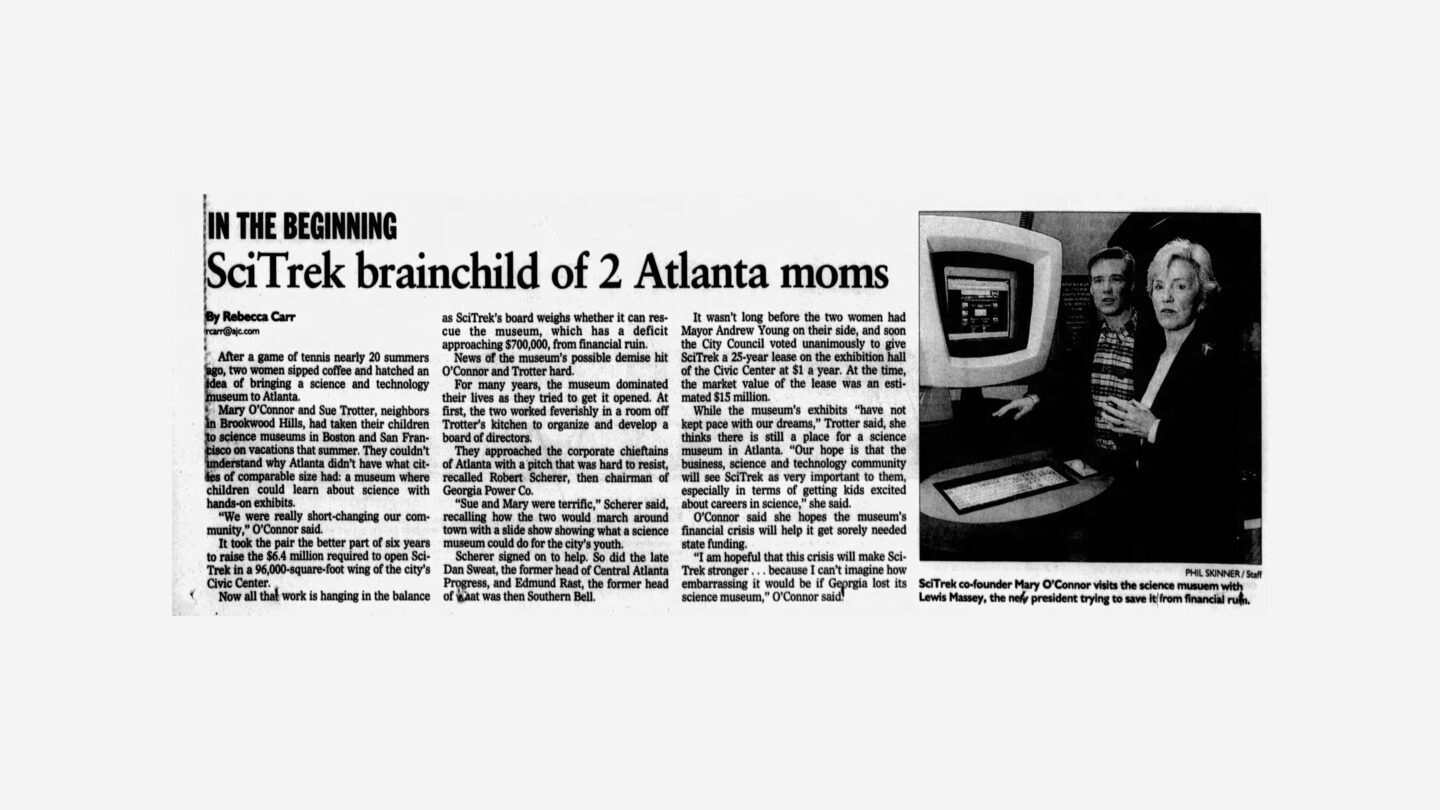
A news clipping about the origins of SciTrek. The Atlanta Constitution, 4 Feb 2001, Sun, Page 44
SciTrek’s Beginnings
SciTrek was the brainchild of Mary O’Connor and Sue Trotter, who decided to pursue a science museum for Atlanta in 1982. The museum was incorporated that same year, thanks to funding from the Metropolitan Foundation. With support from the city of Atlanta and the Robert W. Woodruff Foundation, the museum opened its doors on Oct. 29, 1988, in a 96,000-square-foot facility next to the Atlanta Civic Center.
SciTrek began its journey as Atlanta’s premier hands-on science museum for kids, operating on an annual budget of $2.5 million. With a dedicated team of 34 staff members and the support of 150 enthusiastic volunteers, it quickly became a beloved institution for young, curious minds.
During its three-day grand opening, SciTrek welcomed an impressive 11,000 visitors. By the end of its first full year, the museum had drawn in a total of 350,000 guests. Based on the strength of early attendance numbers, the museum’s organizers had high hopes for the future, estimating that attendance would ultimately reach 1 million.
In 1991, SciTrek saw more than 750,000 visitors, with the majority being schoolchildren.
SciTrek was recognized as one of the country’s 10 best science museums in the October 2001 issue of Good Housekeeping magazine.
SciTrek was recognized as one of the country’s 10 best science museums in the October 2001 issue of Good Housekeeping magazine.
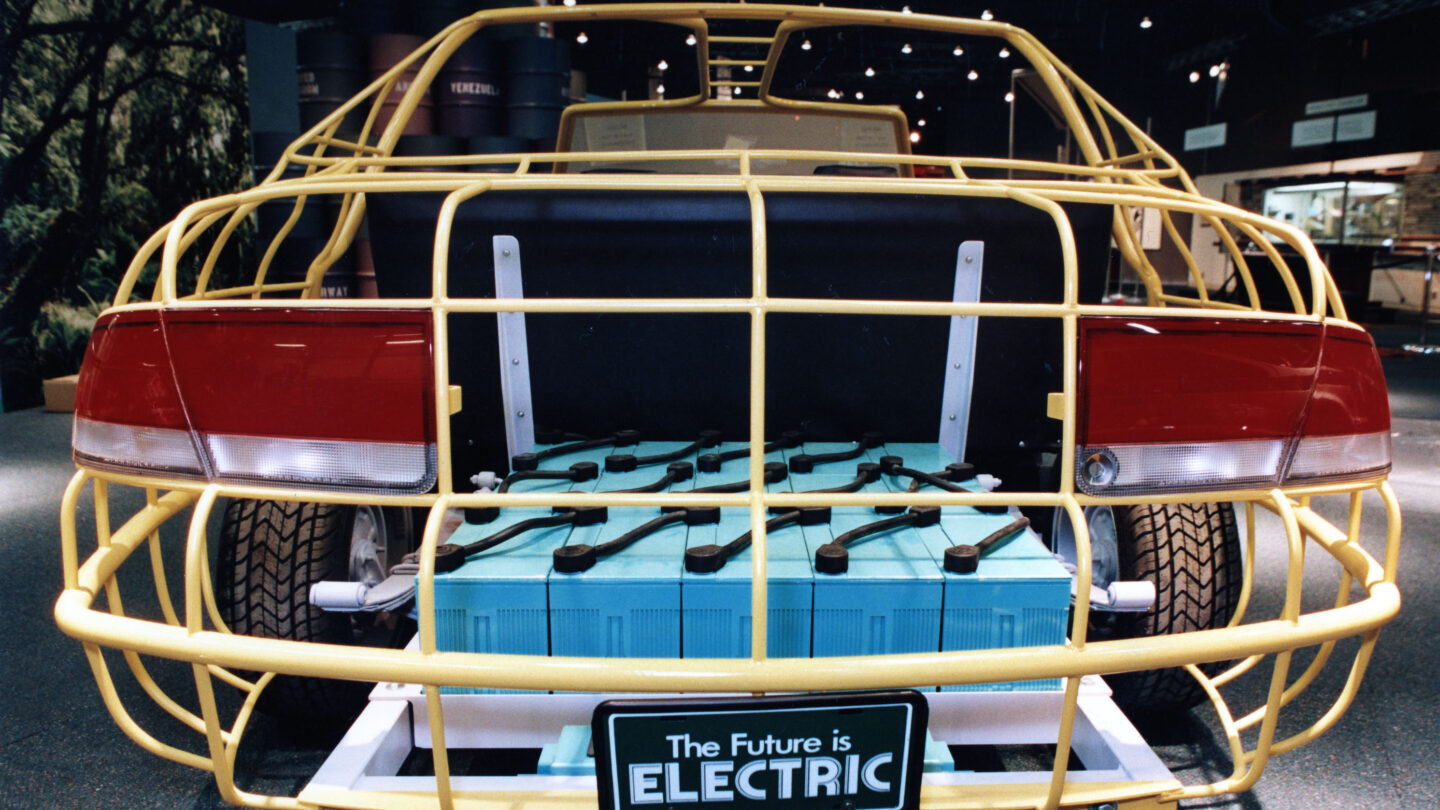
Frame of an electric car on display at the SciTrek museum, 1993. AJCP299-029g, Atlanta Journal-Constitution Photographic Archives. Special Collections and Archives, Georgia State University Library.
Iconic Exhibits and Experiences
At its peak, SciTrek featured over 140 exhibits designed for all ages, providing guests with the chance to delve into the wonders of science and make fascinating discoveries.
SciTrek’s exhibits and experiences captured the essence of STEM fields, making complex concepts accessible, engaging, and fun for visitors of all ages. Memorable exhibits included the Weather Machine, which simulated extreme weather conditions like thunderstorms and tornadoes; the Electrostatic Generator, where visitors could feel their hair stand on end from static electricity; and the Shadow Wall, where children could “freeze” their shadows on a phosphorescent wall. The Kids’ Space Place catered to preschoolers, introducing them to the wonders of science in a playful environment.
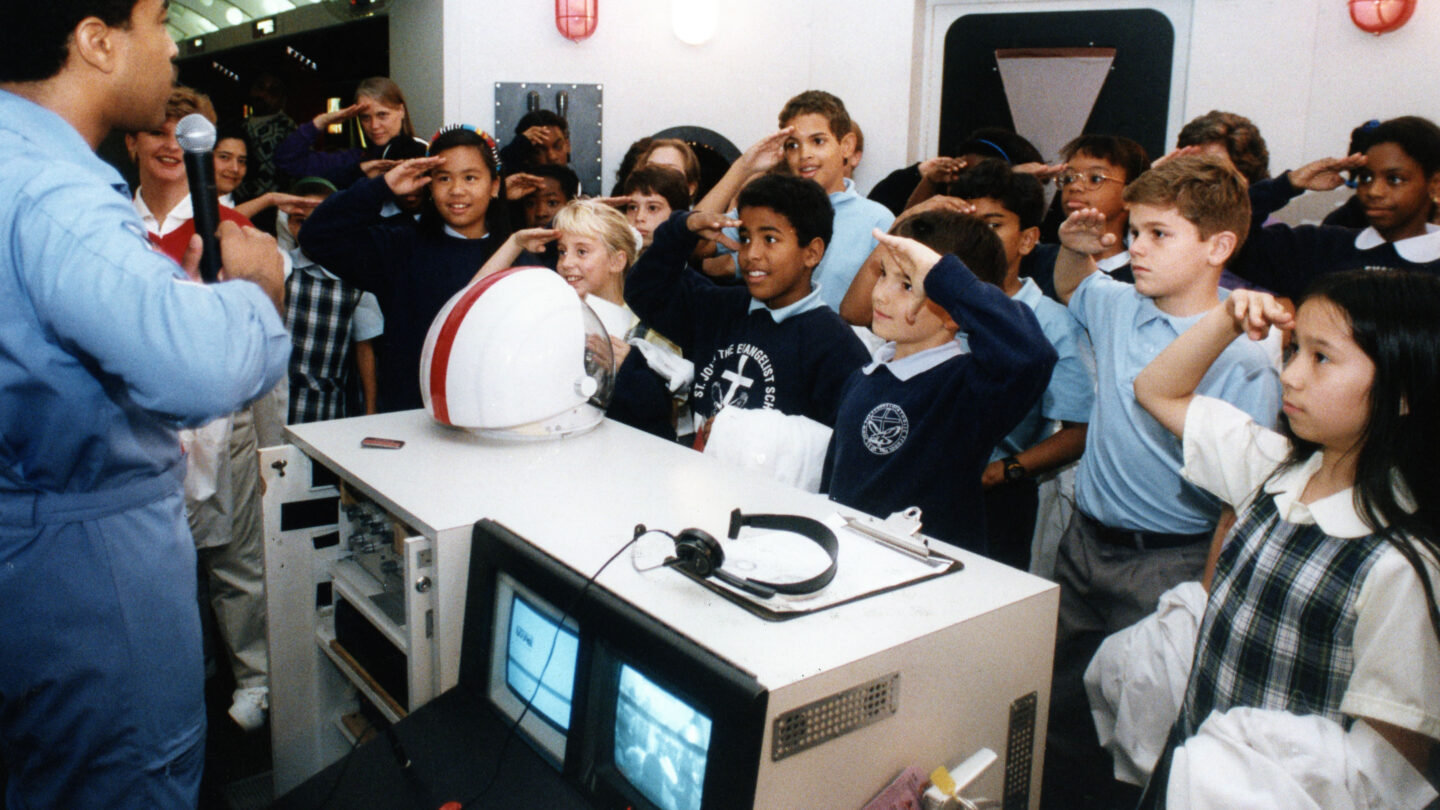
Students at the SciTrek Mission to Mars exhibit, 1992. AJCP299-029f, Atlanta Journal-Constitution Photographic Archives. Special Collections and Archives, Georgia State University Library.
The museum also featured the Challenger Learning Center, a $1.7 million model of a NASA space shuttle mission, which opened its doors to the public in January 2003.
The Closure and Aftermath
Despite its popularity, SciTrek faced financial difficulties throughout its existence. By January 2001, SciTrek faced a financial crisis. The museum had run a deficit for the previous three years, reaching $700,000 for fiscal 2000. Instead of shutting down immediately, the museum’s board granted a 90-day reprieve. In June 2001, the State of Georgia, which had been providing an annual grant of $175,000, contributed an additional $300,000 to help keep the museum operational. In August 2002, the Georgia Assembly allocated $425,000 to SciTrek and started a capital fundraising campaign aiming to raise $5 million. However, in June 2003, the Georgia Department of Education’s budget for the 2004 fiscal year reduced funding for SciTrek by 10 percent.
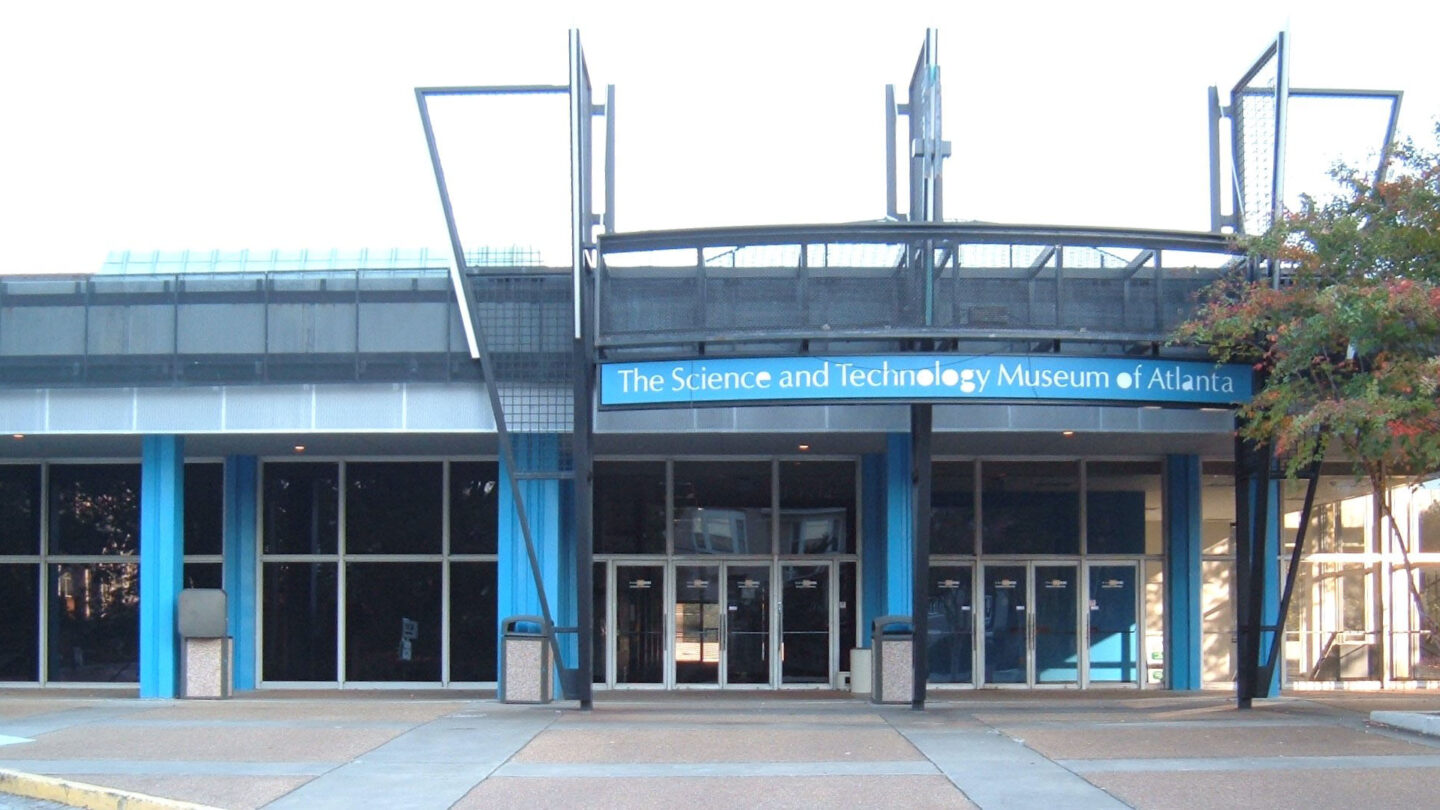
The entrance to SciTrek, November 18, 2005, Wikimedia Commons/Scott Ehardt
The museum ultimately closed its doors on Aug. 27, 2004.
On January 15, 2005, all of SciTrek’s exhibits were either sold or auctioned off. Some assets, including the Challenger Learning Center, found a new home at the Fernbank Science Center. In the years following its closure, the SciTrek facility was repurposed, with portions of the building eventually being converted into other uses, such as a charter school called Tech High.
The Impact of SciTrek
SciTrek’s unique approach to science education left a lasting impact on the Atlanta community. Many visitors credited their experiences at SciTrek for sparking their lifelong passion for science and curiosity about the world. The museum played a vital role in inspiring a generation of scientists, engineers, and inventors who would shape the future of technology and innovation.
Resources
- SciTrek Unlimited Capacity commercial promoting the opening of the museum.
- 1996 Kids Witness News Clip featuring an in-depth look inside SciTrek from 7:16-13:45.
